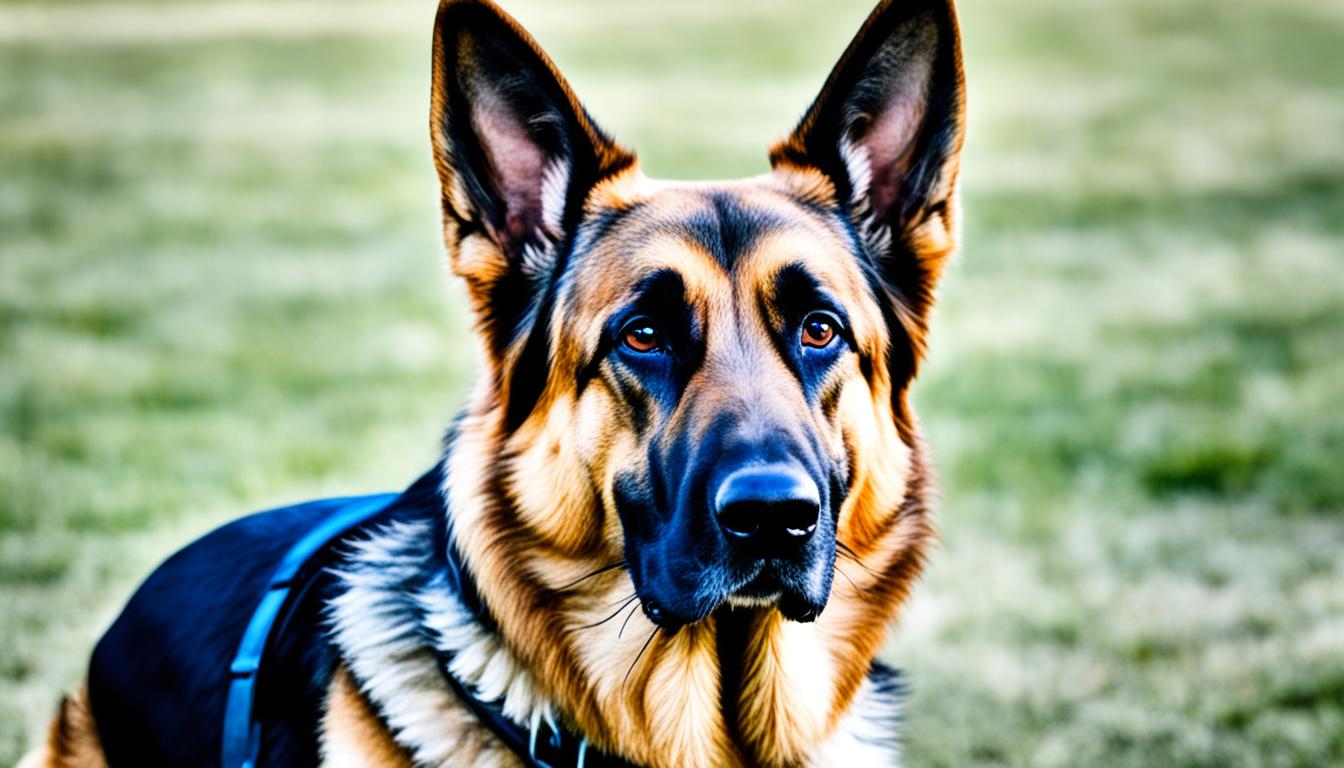German Shepherd When Ears Stand Up: Age Guide
Did you know that the position of a German Shepherd’s ears can indicate important milestones in their development? It’s fascinating to see how these magnificent dogs transform as they grow, especially when it comes to their ears. Knowing when a German Shepherd’s ears will stand up can provide valuable insights into their overall progress.
As proud owners of German Shepherd puppies, many of us eagerly anticipate the moment when their ears will stand up tall and erect. It’s a visual representation of their maturation and an exciting turning point in their young lives. But when exactly can we expect their ears to make this remarkable transformation?
Factors Affecting German Shepherd Ear Development
When it comes to German Shepherd ear development, several factors can influence the outcome. Understanding these factors can help you better support your German Shepherd’s ear development journey.
Genetics and Ear Position
Genetics play a significant role in determining the position of a German Shepherd’s ears. Some German Shepherds are genetically predisposed to have floppy ears, while others have erect ears. The shape and strength of the ear cartilage are influenced by these genetic factors. Therefore, it’s crucial to understand that not all German Shepherds will have ears that stand up naturally.
Teething and Ear Development
The teething process can affect German Shepherd ear development. As puppies go through the teething phase, which typically occurs around 4 to 7 months of age, their ears may temporarily droop or change position. This is because the cartilage is still developing and hardening. Once teething is complete, the ears should regain their proper position and stand up.
Nutrition and Ear Cartilage Strength
Nutrition plays a vital role in the overall health and development of a German Shepherd’s ears. A balanced diet with high-quality food is essential to support the strength and integrity of the ear cartilage. Ensure that your German Shepherd is receiving a diet rich in essential nutrients, such as proteins, vitamins, and minerals, for optimal ear development.
Trauma and Ear Damage
During the early stages of ear development, trauma or injuries can cause permanent damage to the cartilage. Rough handling or accidents that involve the head or ears can affect the natural position and upright stance of the ears. It’s crucial to provide a safe and secure environment for your German Shepherd to minimize the risk of such accidents.
Parasites and Healthy Development
Parasites, such as mites and ticks, can negatively impact the healthy development of a German Shepherd’s ears. Regular veterinary check-ups and deworming treatments are essential to prevent parasitic infestations. Maintaining a parasite-free environment is crucial for the overall well-being and proper development of your German Shepherd’s ears.
| Factors | Impact on Ear Development |
|---|---|
| Genetics | Determines ear position and cartilage strength |
| Teething | Temporary ear position changes |
| Nutrition | Supports ear cartilage strength |
| Trauma | Can cause permanent ear damage |
| Parasites | Negative impact on healthy development |
Understanding the factors that can affect German Shepherd ear development is important for every owner. By considering these factors and providing appropriate care and support, you can help your German Shepherd achieve healthy ear development and ensure their overall well-being. Stay vigilant, maintain regular veterinary check-ups, and provide a nurturing environment for your furry friend’s ear growth journey.
Tips to Help Your German Shepherd’s Ears Stand Up
If you want to help your German Shepherd’s ears stand up, there are several tips you can follow. One essential aspect is providing proper nutrition for ear development. A balanced diet that includes essential nutrients can support the growth and strength of the ear cartilage. Consult with your veterinarian to ensure your German Shepherd’s diet meets their specific needs.
In addition to nutrition, engaging your German Shepherd in activities that promote muscle development can aid in ear standing. Chew toys, in particular, can help strengthen the muscles in their head and neck, which indirectly contributes to the development of upright ears. Choose toys that are safe and suitable for your dog’s age and chewing habits.
If your German Shepherd’s ears have not stood up by 5-6 months, you may consider ear taping as a supportive measure. However, it is crucial to approach this technique with caution and seek guidance from a veterinarian or expert. They will provide proper instructions on how to tape the ears safely and effectively.
Remember, accepting floppy ears is also an option to embrace. While upright ears are desirable in German Shepherds, floppy ears do not negatively impact a dog’s health or overall well-being. Ultimately, what matters most is the love and care you provide to your furry companion.
Lastly, proper cleaning and maintenance of your German Shepherd’s ears are vital to prevent infections and maintain their health. Use gentle cleaning solutions recommended by your veterinarian and regularly inspect their ears for any signs of issues, such as redness, discharge, or foul odor. Seek veterinary attention if you notice any abnormalities.
FAQ
When do German Shepherd puppy’s ears typically stand up?
The timeline for German Shepherd puppy ear development can vary, but in general, the ear cartilage begins to harden around week 20 or when the pup is finished teething. It can take up to 20 weeks for the ears to stand up fully.
What factors can affect the development of a German Shepherd’s ears?
Several factors can influence ear development, such as genetics, trauma during the early stages of ear development, and parasite infestation. Nutrition is also crucial for supporting the strength of the ear cartilage.
How can I help my German Shepherd’s ears stand up?
Providing a balanced diet with proper nutrition is important for overall ear cartilage development. Chew toys can help strengthen the muscles in the head and neck, promoting ear development. Ear taping can be considered as a last resort if a puppy’s ears are not standing by 5-6 months. However, it should be done under the guidance of a vet or expert. Accepting floppy ears is also an option, as it does not negatively impact a dog’s health. Regular cleaning and maintenance of the ears can prevent infections and ensure their overall health.







